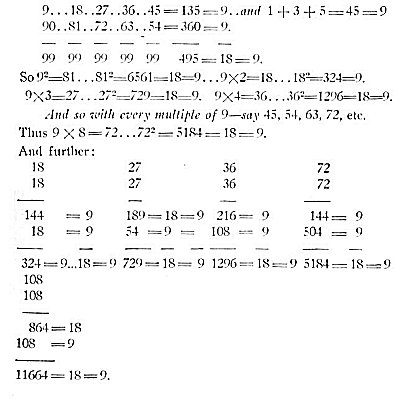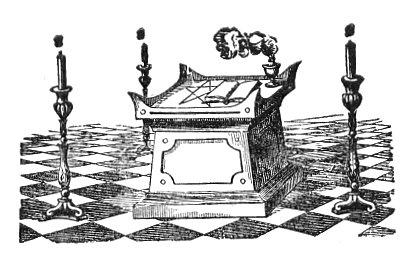p. 393
And in this sense, as presiding over life and death, Dionusos is in the highest sense the LIBERATOR: since, like Osiris, he frees the soul, and guides it in its migrations beyond the grave, preserving it from the risk of again falling under the slavery of matter or of some inferior animal form, the purgatory of Metempsychosis; and exalting and perfecting its nature through the purifying discipline of his Mysteries. “The great consummation of all philosophy,” said Socrates, professedly quoting from traditional and mystic sources, “is Death: He who pursues philosophy aright, is studying how to die.”
All soul is part of the Universal Soul, whose totality is Dionusos; and it is therefore he who, as Spirit of Spirits, leads back the vagrant spirit to its home, and accompanies it through the purifying processes, both real and symbolical, of its earthly transit. He is therefore emphatically the Mystes or Hierophant, the great Spiritual Mediator of Greek religion.
The human soul is itself δαιμονιος a God within the mind, capable through its own power of rivalling the canonization of the Hero, of making itself immortal by the practice of the good, and the contemplation of the beautiful and true. The removal to the Happy Islands could only be understood mythically; everything earthly must die; Man, like Œdipus, is wounded from his birth, his real elysium can exist only beyond the grave. Dionusos died and descended to the shades. His passion was the great Secret of the Mysteries; as Death is the Grand Mystery of existence. His death, typical of Nature’s Death, or of her periodical decay and restoration, was one of the many symbols of the palingenesia or second birth of man.
Man descended from the elemental Forces or Titans [Elohim], who fed on the body of the Pantheistic Deity creating the Universe by self-sacrifice, commemorates in sacramental observance this mysterious passion; and while partaking of the raw flesh of the victim, seems to be invigorated by a fresh draught from the fountain of universal life, to receive a new pledge of regenerated existence. Death is the inseparable antecedent of life; the seed dies in order to produce the plant, and earth itself is rent asunder and dies at the birth of Dionusos. Hence the significancy of the phallus, or of its inoffensive substitute, the obelisk, rising as an emblem of resurrection by the tomb of buried Deity at Lerna or at Sais.
p. 394
Dionusos-Orpheus descended to the Shades to recover the lost Virgin of the Zodiac, to bring back his mother to the sky as Thyone; or what has the same meaning, to consummate his eventful marriage with Persephone, thereby securing, like the nuptials of his father with Semele or Danaë, the perpetuity of Nature. His under-earth office is the depression of the year, the wintry aspect in the alternations of bull and serpent, whose united series makes up the continuity of Time, and in which, physically speaking, the stern and dark are ever the parents of the beautiful and bright.
It was this aspect, sombre for the moment, but bright by anticipation, which was contemplated in the Mysteries: the human sufferer was consoled by witnessing the severer trials of the Gods; and the vicissitudes of life and death, expressed by apposite symbols, such as the sacrifice or submersion of the Bull, the extinction and re-illumination of the torch, excited corresponding emotions of alternate grief and joy, that play of passion which was present at the origin of Nature, and which accompanies all her changes.
The greater Eleusiniæ were celebrated in the month Boëdromion, when the seed was buried in the ground, and when the year, verging to its decline, disposes the mind to serious reflection. The first days of the ceremonial were passed in sorrow and anxious silence, in fasting and expiatory or lustral offices. On a sudden, the scene was changed: sorrow and lamentation were discarded, the glad name of Iacchus passed from mouth to mouth, the image of the God, crowned with myrtle and bearing a lighted torch, was borne in joyful procession from the Ceramicus to Eleusis, where, during the ensuing night, the initiation was completed by an imposing revelation. The first scene was in the προναος, or outer court of the sacred enclosure, where amidst utter darkness, or while the meditating God, the star illuminating the Nocturnal Mystery, alone carried an unextinguished torch, the candidates were overawed with terrific sounds and noises, while they painfully groped their way, as in the gloomy cavern of the soul’s sublunar migration; a scene justly compared to the passage of the Valley of the Shadow of Death. For by the immutable law exemplified in the trials of Psyche, man must pass through the terrors of the under-world, before he can reach the height of Heaven. At length the gates of the adytum were thrown open, a supernatural light streamed from the illuminated statue

Moe is the founder of GnosticWarrior.com. He is a father, husband, author, martial arts black belt, and an expert in Gnosticism, the occult, and esotericism.





